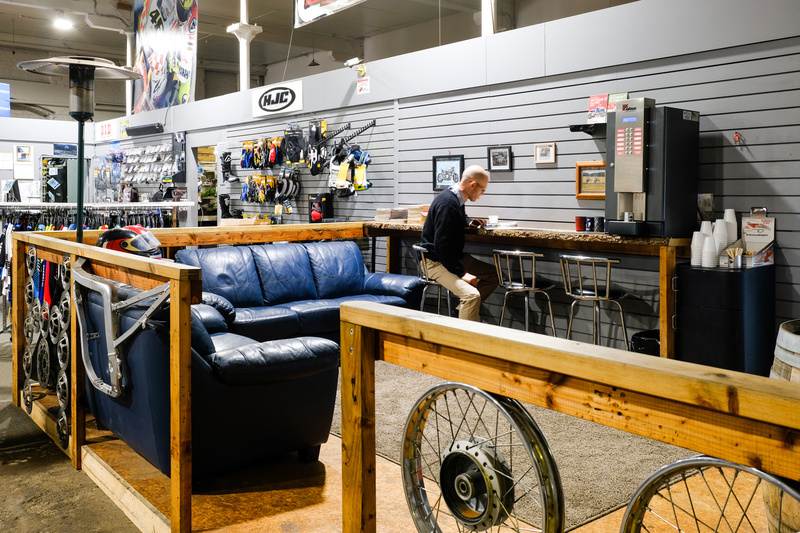Discover Quality Moto Parts NZ for All Your Motorcycle Demands
Discover Quality Moto Parts NZ for All Your Motorcycle Demands
Blog Article
Understanding the Important Components of a Motorcycle: A Comprehensive Guide for Enthusiasts
For motorcycle enthusiasts seeking to elevate their riding experience and ensure their bikes run smoothly, comprehending the essential parts of a motorbike is critical. Each component, from the engine's elaborate operations to the essential duty of the braking mechanisms, not only impacts efficiency however additionally security and convenience. This guide will certainly go through the essential parts that every biker ought to recognize with, allowing notified choices in both maintenance and prospective upgrades. As we begin this expedition, one must ask: how does each component engage to develop the smooth experience every lover looks for?
Engine Parts

The camshaft plays a crucial function in controlling the timing of the engine's shutoffs, ensuring the precise opening and closing needed for efficient gas and air intake, along with exhaust expulsion. This timing is crucial to preserving ideal engine efficiency and efficiency. Furthermore, the carburetor or fuel shot system, depending on the bike version, is accountable for blending air with gas in the correct proportion for combustion.
The cooling system, either air or liquid-based, works to preserve the engine's temperature level within operational restrictions, avoiding getting too hot and making certain longevity - motorbike shop. Each component, thoroughly made and integrated, contributes to the seamless procedure of the engine, specifying the motorbike's power outcome and general efficiency
Transmission System
Indispensable to the bike's performance, the transmission system guarantees reliable power transfer from the engine to the wheels. This system consists of a number of essential parts, consisting of the clutch, transmission, and last drive, each playing a crucial function in translating the engine's power right into movement. The clutch, generally operated by a hand bar, serves to involve and disengage the engine from the transmission, permitting smooth gear changes and regulated velocity.
The transmission, typically described as the transmission proper, consists of a collection of gears that bikers can manually move via to readjust the bike's rate and torque output. These gears are organized in a series that enables the bike to increase smoothly and keep optimal engine performance across various rates. Many bikes make use of a consecutive transmission, needing the cyclist to shift gears in an established order.
Braking Devices
While recognizing the transmission system is essential to using a motorbike's power, just as crucial is the capacity to regulate and stop that power effectively, which is where braking mechanisms enter play. Brakes are vital for safety and efficiency, supplying the cyclist click here to read with the required control to navigate numerous terrains and problems. Normally, motorbikes include 2 sorts of stopping systems: disc brakes and drum brakes.
Disc brakes are a lot more widespread in contemporary bikes because of their premium efficiency. They contain a brake disc, caliper, and pads. When activated, the caliper presses the brake pads against the spinning disc, converting kinetic power right into warmth, thereby slowing the wheel. This system offers much better warmth dissipation, regular efficiency, and enhanced quiting power, especially in damp problems.
On the other hand, drum brakes, though much less typical, are still discovered in some motorcycles. They work by pushing brake footwear against the inner surface of a drum affixed to the wheel. While normally less reliable in heat dissipation and stopping power, drum brakes are simpler and a lot more cost-effective.
Understanding these braking systems' subtleties allows motorcyclists to maintain their motorcycles appropriately and value the engineering that guarantees secure check out here and efficient quiting.
Suspension and Guiding
Suspension and guiding systems are crucial components that considerably influence a bike's handling and ride comfort. The shock absorber, containing forks at the front and shock absorbers at the back, soaks up roadway abnormalities, improving security and control. Front forks, typically telescopic or upside down, compress and rebound to alleviate impacts, while rear shock absorbers preserve tire call with the road, important for traction and safety and security.
Guiding, focused around the handlebars, connects the motorcyclist to the bike's directional control. The guiding head bearings make sure smooth operation, permitting precise maneuverability. Correct positioning and upkeep of these bearings are vital for foreseeable guiding response and decreasing motorcyclist exhaustion.
The suspension's adjustability is another crucial facet; preload, damping, and rebound settings permit customization to match various riding styles useful reference and problems. This versatility is necessary for maximizing efficiency, whether browsing city streets or dealing with sturdy tracks. Technologies like digital shock absorber use real-time modifications, enhancing adventure quality across diverse terrains.

Electric Equipments
After making certain a smooth and controlled experience via efficient suspension and guiding systems, attention transforms to the electrical systems, a pivotal element of modern motorcycles. These systems play a vital role not only in beginning the engine however likewise in powering numerous parts that enhance the functionality and safety of the bike.
At the heart of a bike's electric system is the battery, which shops electrical energy needed for beginning the engine and powering complementary systems - motocross gear nz. The alternator or generator, combined with the rectifier-regulator, makes certain the battery continues to be billed while the motorbike is in procedure, converting power right into electrical power and preserving voltage degrees
The ignition system, another critical element, is in charge of igniting the air-fuel mix in the engine's cylinders. Modern motorbikes typically use a digital ignition system, using higher performance and dependability contrasted to traditional systems.
Lighting systems, including headlights, tail lights, and indications, are also important, guaranteeing exposure and safety for the biker. Additional electronic parts such as sensors, control units, and presents add to advanced attributes like gas shot monitoring, anti-lock stopping systems (ABDOMINAL), and electronic dashboards, better improving the riding experience.
Verdict
A complete understanding of a bike's crucial elements, consisting of the engine, transmission system, braking systems, suspension, guiding, and electrical systems, is vital for lovers aiming to enhance safety and security, performance, and comfort. Mastery of these components enables for informed decisions regarding upkeep and upgrades, eventually enhancing the riding experience. By integrating this expertise, bikers can ensure their bikes operate at peak effectiveness and reliability, thus optimizing both enjoyment and durability of their lorries.
For motorcycle lovers looking to boost their riding experience and ensure their bikes run smoothly, recognizing the essential elements of a motorbike is vital.Indispensable to the motorcycle's functionality, the transmission system guarantees efficient power transfer from the engine to the wheels.While recognizing the transmission system is vital to utilizing a motorbike's power, similarly crucial is the capacity to regulate and quit that power properly, which is where stopping mechanisms come into play. Normally, bikes include two types of braking systems: disc brakes and drum brakes.
A complete understanding of a motorcycle's essential components, including the engine, transmission system, stopping devices, suspension, guiding, and electric systems, is important for lovers intending to enhance comfort, performance, and safety.
Report this page